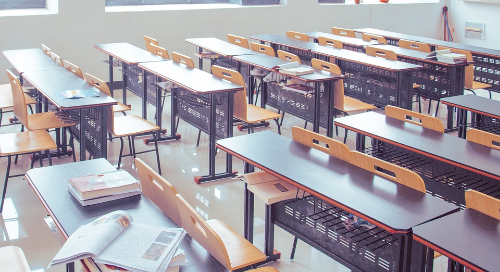Principals serve as lead culture builders who design school communities through effective forms of teacher leadership. By maintaining a laser-like focus on teaching and learning, the principal communicates these top priorities of the school.
Successful principals manage systems, structures and time with precision and synchronicity so they can carry out their commitment to supporting teaching and learning. But how can principals accomplish this in an endless and unforgiving stream of competing demands?
The Wallace Foundation’s key tenets of effective principal leadership include cultivating leadership in others. Successful principals put their staff first by engaging in a shared leadership model and distributing leadership opportunities as a usual course of business, thereby promoting trust, open communication, transparency and collaboration, which in turn elevates their learning community through teacher leadership. There are practical ways of achieving this goal, but it takes disciplined principal leadership with a relentless focus on teaching and learning. Consider these examples:
1. Accelerant of professional learning
The principal must regularly watch for growth opportunities. For example, the principal may have observed a lesson where data informed personalized instruction. The principal should provide immediate positive feedback to the teacher, note that this practice would benefit all teachers, ask the teacher to share knowledge and experience at a staff meeting, and in turn encourage other teachers to visit this classroom. Effective principals must serve as agents of positive change in formal ways, such as asking teachers to present ideas and information to one another, and informal instances such as classroom walkthroughs and hallway conversations. The staff will see that the principal spots effective practices and cultivates professional growth by creating shared professional learning opportunities.
2. Raising the level of rigor
The principal must hold a high bar of expectation for students and staff alike. This takes the form of asking questions that start with phrases such as, “I wonder…” or “Tell me more about…” When the principal models deep thinking in a learning mode, rather than a supervisory mode, it promotes an environment of mutual curiosity and reflection. Teachers benefit from seeing their principal as the lead learner — one who drives inquiry and thoughtful interest in teaching and learning. While strong classroom lessons include clear teaching objectives and effective forms of instruction and assessment, there is no replacement for a level playing field where the principal and teacher reflect together in the very moment of a student’s learning. This is an authentic way to hoist rigor in all classrooms — through observation, inquiry and shared reflection as norms and actions in the learning environment.
3. Teachers as professional leaders and learners
Often the most useful teaching and learning strategies can be found inside the school. The principal should be a conduit to connecting teachers by creating simple and effective ways of supporting one another. For example, the principal might create an informal peer observation system or spark a lesson study model. School leaders must seek and spotlight evidence-based practices, and then create authentic and trusting ways for staff to share. If the principal attempts to lead solely through supervision and directives, teachers will hesitate to engage and share openly about their practice. Instead, the principal should create structures for leading and learning, such as professional learning communities, leadership teams, data teams, teacher-led professional learning and peer observation opportunities, to support all staff in any stage of their professional growth and development.
4. Extending and receiving help
The principal is responsible for creating a learning atmosphere where the culture helps itself to reflect, extend mutual support and solve problems. Principals need to have an open-door policy and be available for informal conversations. Being immersed in the classroom culture and life of the school as a daily learning routine is the first step toward trust building and transparency with staff. One important strategy is appreciation. Principals can never thank their teachers too much. If a school leader wants staff to extend support to one another, it begins with the principal modeling and demonstrating an appreciation and sincere understanding of the joys and challenges of teaching and learning.
5. A strengths-based perspective
The principal should be the champion of every student, staff and parent. This can only happen if the principal sees the gifts and potential in each person and each moment. An effective and respected principal capably turns adversity into advocacy, challenge into change and struggle into strength. How a principal starts the day, greets students and staff, sends messages to the community, supports the school in all endeavors, and ends the day — matters. Engaging students, staff and parents through strengths will reinforce: we are a team, we learn together, we learn to high standards, we are leaders and learners, we all benefit from help, and we are stronger together. This is the definition of principal as culture builder, and the key to success is teacher leadership.









Leave a Comment